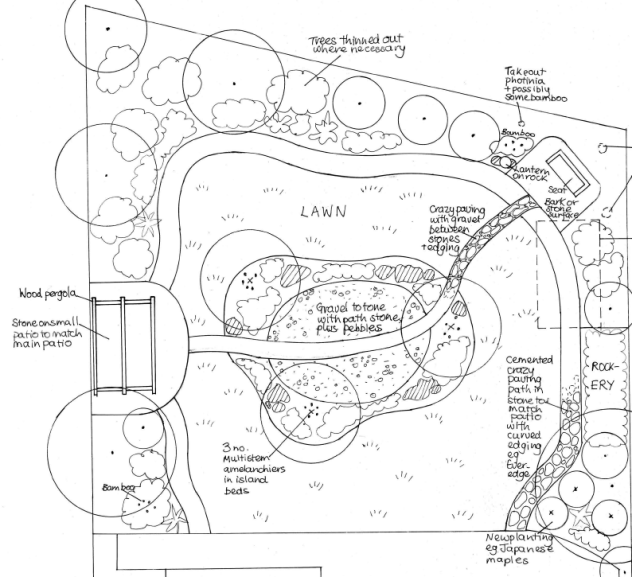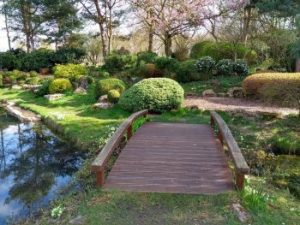I have been asked to design gardens with an Oriental influence recently, particularly from the Chinese and Japanese traditions. I haven’t seen these gardens in their home countries, but there are examples in the West that have inspired many.
My most recent clients were inspired by one in Vancouver – and so were two people whose own garden appeared on Gardener’s World recently; a single visit inspiring in all of them a lifelong interest, and the wish to create a beautiful garden. It is the Dr Sun Yat-Sen Classical Chinese garden. A Chinese pavilion looks onto a lake surrounded by rocks, trees and a mosaic path. For Japanese inspiration (and boundless energy), see the gardens designed by Kazuyuki Ishihara, who has designed at least 14 Japanese gardens at Chelsea. He takes you round his own garden in Nagasaki here.
My clients liked the Japanese tradition of ‘stroll gardens’. These were designed for the aristocratic class to give owners and their visitors the entertainment of exploring a garden, rather like our English Romantic tradition does: to take a winding path to see different views and features round the garden.
I was commissioned to design a ‘modern take’ on a stroll garden with a ‘structured informality’, in a medium-sized garden. They basically had a large lawn surrounded by trees, with very little else. They wanted to make the garden more interesting, with new views to enjoy as you went through it, rather than being able to see everything from one place.
The Japanese garden next to a Buddhist temple in Milton Keynes inspired me to see what could be done. It isn’t a large garden, but still there is a path round a lake with different views at every turn, like a landscape in miniature.
The bridge acts as an entrance to your ‘stroll’.

When you come over the bridge, a different view, of clipped shrubs and rocks catches your eye.

You look back during your walk for views of the temple reflected in the lake.

At the end of the walk, you can look back to see the trees reflected in the lake. And during your exploration you can pause and sit on a rock, to take in the views. In this case, there is a view of the hill in Willen Lake park with the ‘Peace Pagoda’, also built by the Japanese monks here, in the distance. A lovely peaceful place to visit.

Many Japanese stroll gardens are centred around a body of water, but sometimes they use a ‘dry sea’ of stones and gravel instead. As water was not required, this ‘dry sea’ was my starting point, together with a circulating path.
Another source of inspiration were the Schnormeier gardens in Minnesota. These were designed and constructed by an American couple. I and my clients particularly liked this feature using multistem trees and stone paving of different sizes.

For my client’s design, I used 3 multi-stem trees around an area with gravel and pebbles, with a stone path of larger, irregular stones. The trees were in two irregular shaped curvy beds with larger rocks, small shrubs and grasses.

The back border will have a couple more layers of planting added: shrubs and groundcover. The outline plan of paths and beds looks like this:

I’m looking forward to designing the planting, for a modern, but Japanese-influenced look.
Resources:
What is a Japanese Stroll Garden?
Dr Sun Yat-sen Classical Chinese Garden
A Garden Paradise with Kazuyuki Ishihara

{ 1 comment… read it below or add one }
Very nice and informative post, Thanks for the wonderful post, This authentic Japanese temple garden, along with some wonderful photographs that you are added to your blog, has put the next level into your blog. Really appreciate your blog. http://www.commerciallandscaperssouthhampton.co.uk/landscape-design-southampton/